April has arrived - don’t waste time gardening.
Article from the category: Calendar of work for gardeners and vegetable gardeners
Spring is coming with increasing speed, and gardeners will have a lot of work in April. To help novice summer residents properly plan this work, this article was written. We hope that it will be of interest to gardeners, gardeners, and amateur flower growers.
- Work in the garden in April.
- Work in the garden in April.
- April worries for flower growers.
What work needs to be done in the garden in April
Your garden: work of the month
Start April work at the dacha with deep loosening of the soil. At the same time, apply fertilizers to fruit and berry crops: nitrogen, phosphorus-potassium and organic.
Heavily compacted clay areas will have to be dug to a depth of 10-15 cm. If meltwater lingers in the garden and the soil is overly moist, dig shallow grooves to drain the water.
In April, dacha cleanups are traditionally held, and work is carried out to remove the garbage that has accumulated over the winter.
Free the trunks from the winter binding, unclutter the young trees. Clean trunks and skeletal branches of dead bark. Finish pruning the crowns of fruit trees. Cut out the growth. Coat wounds and large cuts with garden varnish.
Pay attention to berry bushes
Perform final pruning of berry bushes in April. Pluck out enlarged currant buds that are infested with mites.
In mid-April, black currants are propagated by lignified annual cuttings. A cutting 16-18 cm long is cut at the bottom just under the bud, at the top - 1-1.5 cm above the bud. The cuttings are planted in loose, well-prepared soil, obliquely, leaving 1 bud above the ground. Water and mulch.
In the fall, young cuttings are pruned to a height of 10-15 cm, and in the fall of next year they are planted in a permanent place.
Cuttings of red and white currants are cut and planted in early September. Gooseberries are easier to propagate by layering.
Start caring for strawberries by clearing the plantation of covering materials, last year's leaves, and excess tendrils.
Try to loosen the row spacing to a depth of 4-5 cm early and trim the bushes.Strawberries are very responsive to early loosening. Feed your strawberries with nitrogen fertilizers.
Spray with abiga-pik fungicide (50 g) with the addition of novosil (2 ml) per 10 liters of water.
Trim the raspberries to a well-developed bud. Loosen the soil and fertilize it with organic matter mixed with complex mineral fertilizers. Mulch the rows with compost and humus with a layer of 4-5 cm.
Planting seedlings in April
Plant fruit trees in April if you did not do so in the fall. Choose 1-2 year old seedlings with a good root system; the buds should not yet bloom.
Before planting, soak the seedlings to restore the turgor of the root system, make a clay mash. Water thoroughly after planting and mulch the hole with organic matter.
Make crown pruning of the seedling to restore the connection between the roots and the future crown. If there are lateral branches, trim one third of the entire aerial part to the outer bud.
Shorten the central conductor by 20-30 cm above the level of the skeletal branches. On the trunk (40-50 cm), blind all the buds.
Be sure to treat your garden against diseases and pests in April.
Early spring is an important period for protecting the garden from pests and diseases. The apple flower beetle is the first to wake up - already during the swelling of the buds. It is still little active, cannot fly and climbs into the crown along the trunk. To detain it, put catching belts on the trunks, preferably adhesive ones.
How to use catch belts
Clean the area of the trunk on which the belt is placed from dead bark so that there are no passages for insects under the belt. Make a belt from thick paper or soft cardboard, burlap and coat it with caterpillar glue.
You can make a belt from old cotton wool, loosening it a little: insects get stuck in it. To protect from rain, cover your belt with a polyethylene visor. If you don't have track glue, you can treat the belt with a chemical.
Place a belt in the middle or upper part of the trunk, or you can put two.
If you're late with your belt, shake off the pests!
When the buds begin to bloom, it will be too late to apply belts. All wintered beetles will already have time to climb into the crown. All that remains is to shake them off onto the litter early in the morning, when the air temperature is no higher than 10 degrees.
Before the buds emerge, do 3-4 shakings. But this is only possible for those gardeners who come to their dacha not only on weekends. The rest will have to use chemical protection.
At the beginning of bud bursting (the “green cone” phase), larvae of aphids, copperheads, caterpillars of leaf rollers, winter moths, cherry moths, weevils, tubeworms and other pests gather on the buds.
Chemical pest and disease control products
In April, you can spray trees and berry bushes with fufanon or spark, or kemifos (10 ml per 10 liters of water), or alatar (5 ml). Treat currants against red gall aphids and diseases with kinmix (2.5 ml) + topaz (2 ml).
If the trees in your garden are affected by scab, moniliosis, cluster sporiosis (cherries, plums, apricots), carry out a very effective spraying at this time with a 3% Bordeaux mixture (300 g of copper sulfate + 400 g of lime per 10 liters of water).
Apply only 1% Bordeaux mixture to newly opened leaves. Instead, you can use other fungicides on the leaves - chorus, speed, gamair, rayek.
In the third ten days of April, spray raspberries against aphids, moths and other pests with fufanon (10 ml) with the addition of estrasol (10 ml) or novosil (3 ml).
In the second ten days of April, spray the “green cone” of peaches against moniliosis and leaf curl with abiga-pik (40 g per 10 liters of water).
At the end of the month, before flowering, spray seed crops with a biostimulant (Novosil or Extrasol) to increase resistance to adverse conditions (frost, etc.).
To improve the keeping quality of fruits and their resistance to rot, apply foliar feeding with a solution of calcium nitrate (50 g) with the addition of extrasol.
For more information about controlling garden pests and diseases in spring, read the article “Garden treatment for pests in spring”
What kind of work awaits gardeners in April?
Vegetable garden: work of the month
Preparing an early harvest
The earlier you start the gardening season, the more you will do in the spring and the richer the harvest you will get. Many summer residents come to the site for the first time after winter in April. Naturally, the first thing we do is inspect the beds: like garlic, onion sets planted in late autumn have overwintered.
If the beds with these crops were covered with leaves and grass for the winter, we remove everything so that the soil warms up faster, loosen it, and apply nitrogen fertilizers (a tablespoon of urea per sq. m).
If there are heads of garlic left at home after winter, plant them as early as possible. There is no point in storing it further, and in the ground the cloves will form large single-claw bulbs, which are suitable both in the kitchen and for winter planting. We also plant onion sets in April.
We clear the areas where perennials grow (onions, chives, asparagus, rhubarb) from plant debris and loosen the soil.
Cover the beds with film
If at the beginning of April it is not warm enough, you can cover the beds with film or non-woven material on the arches - we will get the first greens faster. It is better to use a new film: through it the sun will warm the soil faster. But if the old film is still strong, wash it thoroughly. In warm weather we remove the cover.
In April, we need to loosen up the rhubarb in the garden; we feed it with complex mineral fertilizer for spring application.
If you want to plant a bush, we take cuttings from the periphery of the bush. There the buds are stronger and, therefore, will give birth to more productive plants. And they shoot later.
You can do the same with an overgrown lovage bush.
You can feed sorrel with a weak solution of nitrogen fertilizers (0.5 teaspoon of urea or ammonium nitrate per sq. m).
If the sorrel grows well, then we don’t feed it to protect ourselves from nitrates. Leaves that have grown to 10 cm can already be cut or torn off.
If the sorrel bed is already more than one year old, in April it’s time to sow it in another place - as a replacement. At the beginning of summer we will harvest leaves from young plants and dig up the old bed.
In April it is necessary to sow cold-resistant plants
We do not postpone sowing other cold-resistant crops until May:
- salad
- spinach
- dill
- parsley
- carrots
- parsnip
- chard
- arugula
- Japanese cabbage
- radishes
While it is not hot, in soil moistened with snow and rainwater they will sprout more friendly and faster.
Polka dots. Don't forget to sow brain peas in April. It’s hard to find a better treat for kids at the beginning of summer than sweet peas. Peas sown in May germinate less quickly and finish flowering and fruiting faster.
It is better not to rush into sowing seeds for seedlings in beds covered with film. First, let the weed seeds germinate. In beds covered with film, weeds begin to sprout within 2-3 days. By loosening the soil, we will significantly make life easier for the garden plants that we sow as seedlings for an early harvest.
Cabbage. In mid-April (weather permitting), we plant seedlings of all types of cabbage in the beds - white cabbage, cauliflower, broccoli, kohlrabi, Peking, Brussels sprouts. Lettuce seedlings will not be afraid of temporary cold snaps either. In case of a sudden cold snap, you can always find something to cover these beds with.
Asparagus. We hill the bed with asparagus high (20-25 cm) with earth or a mixture of earth and compost, humus to obtain bleached shoots. You can simply add humus, compost, sawdust.
We level the surface of the embankment and lightly compact it in order to notice shoots breaking through the soil layer in time. Already in April you can prepare asparagus salad, omelet or cook soup. Children enjoy eating fresh asparagus shoots, comparing their taste to green peas.
Planting potatoes
We don’t put off planting potato tubers either. If the weather is warm, you shouldn’t wait until the tubers laid out for germination sprout sprouts and roots at home: it’s better to place them in a permanent place - in the garden bed.
Small potato areas can be covered with film or non-woven material: the potatoes will sprout faster. The 1-2 weeks “saved” in the spring will have a positive impact not only on the timing, but also on the quality and quantity of the harvest.
Before planting, we discard tubers with rot spots and thread-like sprouts. We do not plant potatoes in areas that they occupied in previous years, and next to beds allocated for planting tomatoes.
Sow herbs
At the end of the month, you can sow herbs in the beds:
- basil
- lemon balm
- thyme
- snakehead
- marjoram
- hyssop.
They will take up little space, but will bring enormous benefits: both to the plants on the site, protecting them from pests, and to us, giving a unique taste and aroma to drinks, meat and fish dishes, marinades and pickles.
After sowing, it is advisable to cover the beds with non-woven material or paper to retain moisture in the soil until germination. We use film for these purposes only if we are at the dacha every day and have the opportunity to remove it in case of sudden warming.
Our spring is unpredictable, and in April there can be a heat wave: under the film, tender shoots will burn in a matter of minutes. We won't even find any traces of them.
Don't forget about pests
In April, it is already necessary to take measures to protect garden plants. Radishes, cabbage, watercress, and mustard can be damaged by the cruciferous flea beetle. We dust the crops with sifted wood ash and install glue traps. Loosening the soil and the same wood ash will help against cruciferous flies.
Some summer residents, in order to protect cabbage and radishes from pests, grow them under thin non-woven material on arches, pressing it tightly to the soil.
We take care of the soil
In an effort to sow and plant faster, let’s not forget to walk with a rake over the beds dug up in the fall. If this is not done while the soil is wet, then you will have to spend several times more effort to level the beds, and the beneficial spring moisture will be irretrievably lost.
The soil, ready for processing, does not stick to the rake, but crumbles without forming large lumps.In low, shaded areas, we till the soil last, letting it dry so as not to compact it.
We remove from the site all plant debris remaining after the last season and place it in layers in a compost heap, sprinkling each layer with soil or humus, compost. If we regularly moisten the pile, the compost will ripen by autumn.
At the beginning of April, you can still sow fast-growing green manures (mustard, phacelia) in the beds reserved for planting seedlings of nightshade crops (tomatoes, peppers, eggplants).
Fight weeds
When preparing the beds for planting, we carefully select from the soil the rhizomes of wheatgrass, sow thistle, field bindweed and other perennial weeds. In a week we will return to these beds to pull out the weeds that have appeared from the ground.
Wheatgrass is persistent in its desire to develop more and more new beds in the garden, but we will be more persistent than him, and we will eradicate wheatgrass and sow thistles without the help of herbicides.
What work needs to be done in greenhouses in April
At the beginning of April, the greenhouse should be ready for planting tomato or cucumber seedlings. If the greenhouse is film, it is better to cover it with a new film; if it is glass, wash the glass thoroughly. We fertilize the soil with organic matter (up to a bucket of compost or humus) or complex fertilizers for spring application (up to two tablespoons per square meter).
What to sow in a greenhouse
Radish. Early varieties of radish can be sown as an intercrop. Although it is cold-resistant, it will form root crops faster under the film. We immediately try to sow the seeds at the required distance from each other in order to provide the plants with sufficient illumination and feeding area even without thinning.
We make seeding furrows 10-15 cm apart from each other, spill them with hot water and place the seeds 3-4 cm apart from each other. If we doubt the quality of the seeds (old, puny in appearance), we sow more often - every 1-2 cm,
If the radish sprouts thickly, we will have to thin it out, otherwise we will not be harvesting, but admiring the flowering of the radish. The depth of planting the seeds is about 1.5 cm.
We do not open the greenhouse until the shoots appear: the warmer it is, the faster the radishes will sprout. But after germination, the temperature in the greenhouse will have to be controlled by constant ventilation: otherwise the radish will develop powerful tops, but weak root crops.
During the period of formation of root crops, regular watering is very important for radishes: the soil should be constantly moderately moist. Interruptions in watering cause defects in root crops: they crack.
Dill, garlic, onion. You can scatter dill seeds sparsely in the greenhouse, plant cloves of garlic and onions in the spaces between the rows of future beds. We will not completely remove these crops from the greenhouse even after the cucumbers or tomatoes grow. They will help maintain a healthy microclimate in the greenhouse.
Spinach. Spinach is considered a good neighbor and predecessor of most vegetable crops. It can also be sown as an intercrop not only in open beds, but also in a greenhouse. And the sooner, the better.
April, with its still not very long daylight hours, is a great time to get vitamin leaves.
To determine the timing of sowing various crops, use the “blooming tips”:
- The first crocuses (yellow) have bloomed - you can sow chives, leeks, and after a few days other cold-resistant crops.
- The birch tree has turned green in the sun - it’s time to plant potato tubers for summer consumption and onion sets.
- The flowering of early daffodils will tell you that you can already sow lettuce, plant cabbage seedlings in the beds, and sow beets.
- The lilacs have bloomed wildly - you can sow early cucumbers.
- The buds on the peonies formed and became clearly visible, the viburnum bloomed - the soil warmed up enough for sowing late cucumbers, corn, and melons.
April works of flower growers
Your flower garden: work of the month.
To read this article go to the next page: "April concerns of flower growers."
Other articles in this series:
- Gardener's and gardener's work in May
- Works of gardeners and vegetable gardeners in June
- Works of gardeners and vegetable gardeners in July
- Works of gardeners and vegetable gardeners in August
- Works of gardeners and vegetable gardeners in September
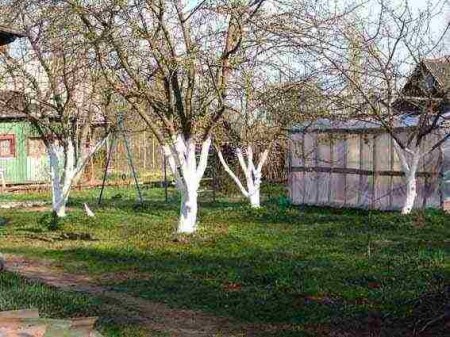
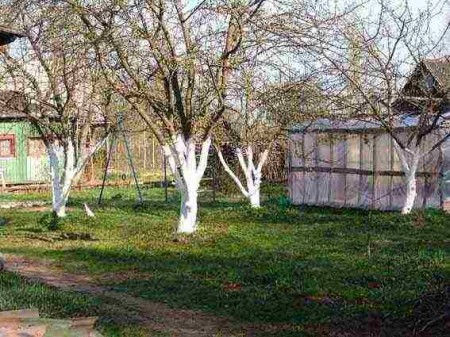
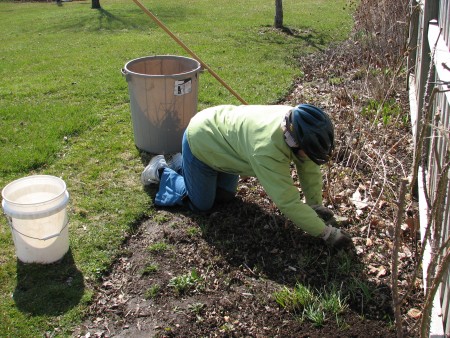
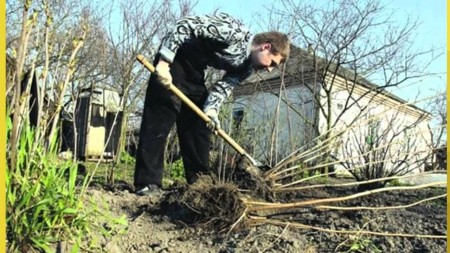
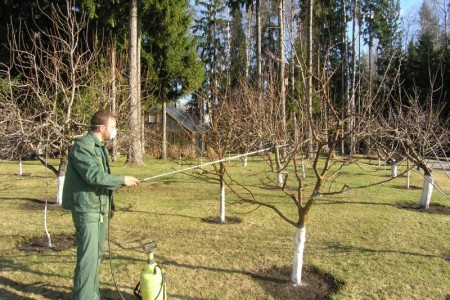
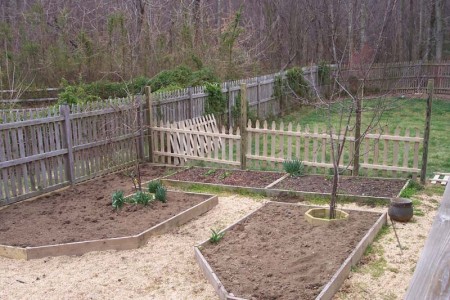
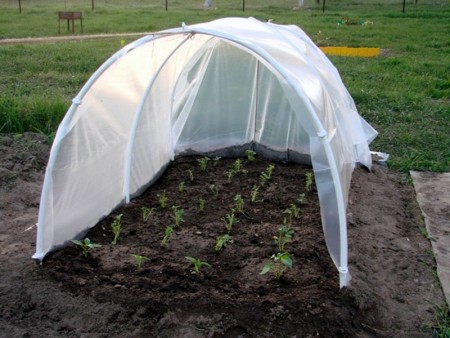
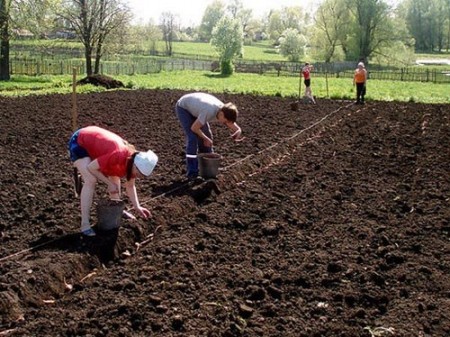
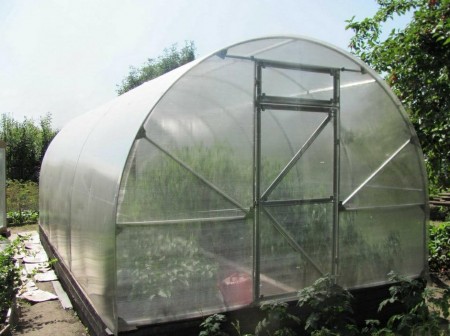

 (29 ratings, average: 4,66 out of 5)
(29 ratings, average: 4,66 out of 5) CUCUMBERS NEVER GET SICK, I'VE BEEN USING ONLY THIS FOR 40 YEARS! I SHARE A SECRET WITH YOU, CUCUMBERS ARE LIKE THE PICTURE!
CUCUMBERS NEVER GET SICK, I'VE BEEN USING ONLY THIS FOR 40 YEARS! I SHARE A SECRET WITH YOU, CUCUMBERS ARE LIKE THE PICTURE! You can dig a bucket of potatoes from each bush. Do you think these are fairy tales? Watch the video
You can dig a bucket of potatoes from each bush. Do you think these are fairy tales? Watch the video
 How our fellow gardeners work in Korea. There is a lot to learn and just fun to watch.
How our fellow gardeners work in Korea. There is a lot to learn and just fun to watch. Eye trainer. The author claims that with daily viewing, vision is restored. They don't charge money for views.
Eye trainer. The author claims that with daily viewing, vision is restored. They don't charge money for views. A 3-ingredient cake recipe in 30 minutes is better than Napoleon. Simple and very tasty.
A 3-ingredient cake recipe in 30 minutes is better than Napoleon. Simple and very tasty. Therapeutic exercises for cervical osteochondrosis. A complete set of exercises.
Therapeutic exercises for cervical osteochondrosis. A complete set of exercises. Which indoor plants match your zodiac sign?
Which indoor plants match your zodiac sign? What about them? Excursion to German dachas.
What about them? Excursion to German dachas.